I’ve wanted to visit Japan for as long as I can remember, and this year my wish came true. Hooray! There were many things about the country that were exactly as I’d imagined, yet others surprised me.
I get asked about my Japan trip a lot, so I thought I’d outline my tips if you’re going to Japan solo for the first time (especially if you’re a woman) – as there were quite a few things that I wasn’t expecting.
Because I was travelling solo for half of my trip, I will discuss what this was like and how you can do it too. If you’re planning a trip to Japan alone, read on.
Is Japan safe for female travellers? Japan certainly “feels” safer than many other places you’ll travel to as a girl or woman, though Lonely Plenet advises that many crimes go unreported, so always err on the side of caution. That said, Japan will feel very different to most other countries you’ll travel to.
1. Japan ‘feels’ safe.
I use the word ‘feels’ here because, of course, no place can be truly safe, and what feels safe to one person might feel scary to another. HOWEVER, Japan to me felt SO much safer than many other places I’ve travelled to, and it was really, really liberating. It took a while to get used to, but once I did, I was happy to walk around alone at night and go wherever I wanted to go, no matter the time of day.
I’d forgotten just how much the time of day impacts where I go and what I do, and how much I resent that. There are many places I travel to where it often feels like a race against the sun – no sooner is dusk upon us than I’m wondering how I’m going to get back and if I’m in a safe enough place for it to be dark.
I’m sure men sometimes have this too, but I do think it’s primarily a solo female traveller’s issue (argh). I remember a real turning point moment when I was up at the crack of dawn in Tokyo and there wasn’t a soul around, and I had a flicker of worry (because you always do), then I relaxed and realised I was somewhere safer than most.
Anyway, that day as I walked to the subway with all my belongings (including laptop), I thought “this is how men must feel all the time”. Of course bad things happen everywhere, but I have to say that some places just have more problems than others.
Now of course I’m not suggesting you should throw caution to the wind, but I know you won’t do that anyway, and it’s important to say from one woman to the next that in Japan you will probably feel different from many other places you go.
So is Japan safe to travel alone? Well, I never once had someone shout at me, stare at me, wolf whistle, heckle, try anything on, walk behind me a LITTLE too close, follow me (FFS), say one of those pointless lines like “hey, where are you from?”, or any of the other micro aggressions that a girl gets used to all the friggin’ time whilst on the road. In fact, for the most part, the people I encountered in Japan – men, women, old young – were extremely friendly, helpful and polite.
In fact, the one time someone ran up to me on a train platform was a lady who wanted to give me a chocolate for my journey.
2. Carry cash.
So this was something I was surprised about. I was fully expecting Japan to be majorly tech-ed up, all about the Apple pay and Monzo etc, and for me to be able to pay for everything on my smartphone, as I do at home. However, Japan still, for the most part, is a cash-based society. This surprised me. So you’ll need to withdraw money from an ATM in large chunks, which I know can be scary to the solo female traveller, I hear you.
What I suggest you do is use the 7/11 for withdrawing cash as the fees are lower than the banks for foreign nationals, and there will usually be plenty of people around for you to feel safe. You should have no worries carrying this cash around with you or back to your hotel room to put in the safe. It’s what I did, and I had no issues and never once felt threatened. In many other countries this ATM scenario is a logistical nightmare (doubly for women), but in Japan it feels fine.
That said, I would still adhere to the principles of dividing up your cash and credit cards in case of theft or loss, so you’re never left high and dry, and always keeping what you don’t need in a hotel safe or locked up in your backpack or hostel locker.
Is travelling in Japan expensive? Japan wasn’t as expensive as I thought. My main expense was the bullet trains, but aside from that, most other things were very reasonably priced. Food cost me around £5-10 per meal, and breakfast was always included in the rate of my hostel. I’d say the most expensive thing was nice coffee (my guilty pleasure!), which cost around £3, so I limited myself to one cup a day. My hostels were £12-15 a night. The subway system and buses were also cheaper than London, and in Kyoto I rented a bike for £10 and really enjoyed the freedom and exercise that gave me. Highly recommended!
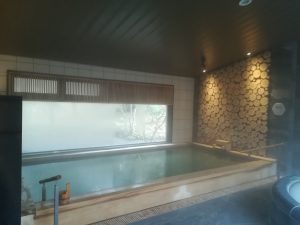

3. Visit an onsen.
They are amazing! And are in most places you’ll visit. Public bathing is the norm in Japan, and onsen are usually gender segregated so you don’t have worry about some pervy person ogling you whilst you try and relax (in onsen, wearing swimwear is a no-no).
You start by sitting down at one of the public washing stations/vanity tables and taking a shower before your dip – the small towels are used to cover your front as you walk in and then placed on top of your head while you soak.
The changing rooms have lots of places where you can sit down, do your hair, use the beauty products and basically pamper yourself. I wish onsen were the norm in every other country as they make so much sense to me. Way more sense than spas, which make self-care seem out of reach for so many people because of the price tag and general “this is only for an occasional treat” vibe. Self-care should be the norm!
You can also book a massage when you get there, for extra relaxation and stress-relief. Perfect if you’ve been out hiking or pounding the pavements in Tokyo.

4. Take a bullet train.
The Shinkansen (bullet trains) are some of the best trains in the world. Yes, they’re expensive (a single ticket from Tokyo to Kyoto costs around £90) but you can minimise costs by buying a travel pass from your home country before you visit Japan. In the UK, your best bet is to go to the Japan Centre.
A weekly travel pass works out at around the same price as a return ticket from Tokyo to Kyoto, so it will soon pay for itself.
The Shinkansen are fast, very safe and reliable, and for the most part there’s no need to book. You can pay a bit extra for a reserved seat, but I had no problem getting an unreserved seat when I turned up on the day. They’re very regular and always on time (hint hint, London!).
When you’re waiting on the platform, you’ll need to stand in line for the car that you’re booked onto. The markings are written on the platform floor. Ladies in pink uniforms will clean the train before you’re allowed on, and everyone files in neatly. There’s a luggage space at one end of the car so you don’t need to lug your bags around, and a refreshment trolley that comes through regularly.
Although it says there’s free wi-fi, I never managed to log on, so this is really is the time to switch off and watch the countryside whizz by instead of posting on social media or checking emails.

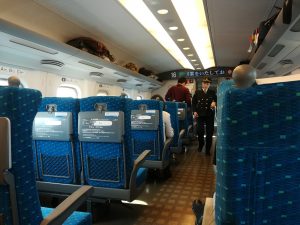
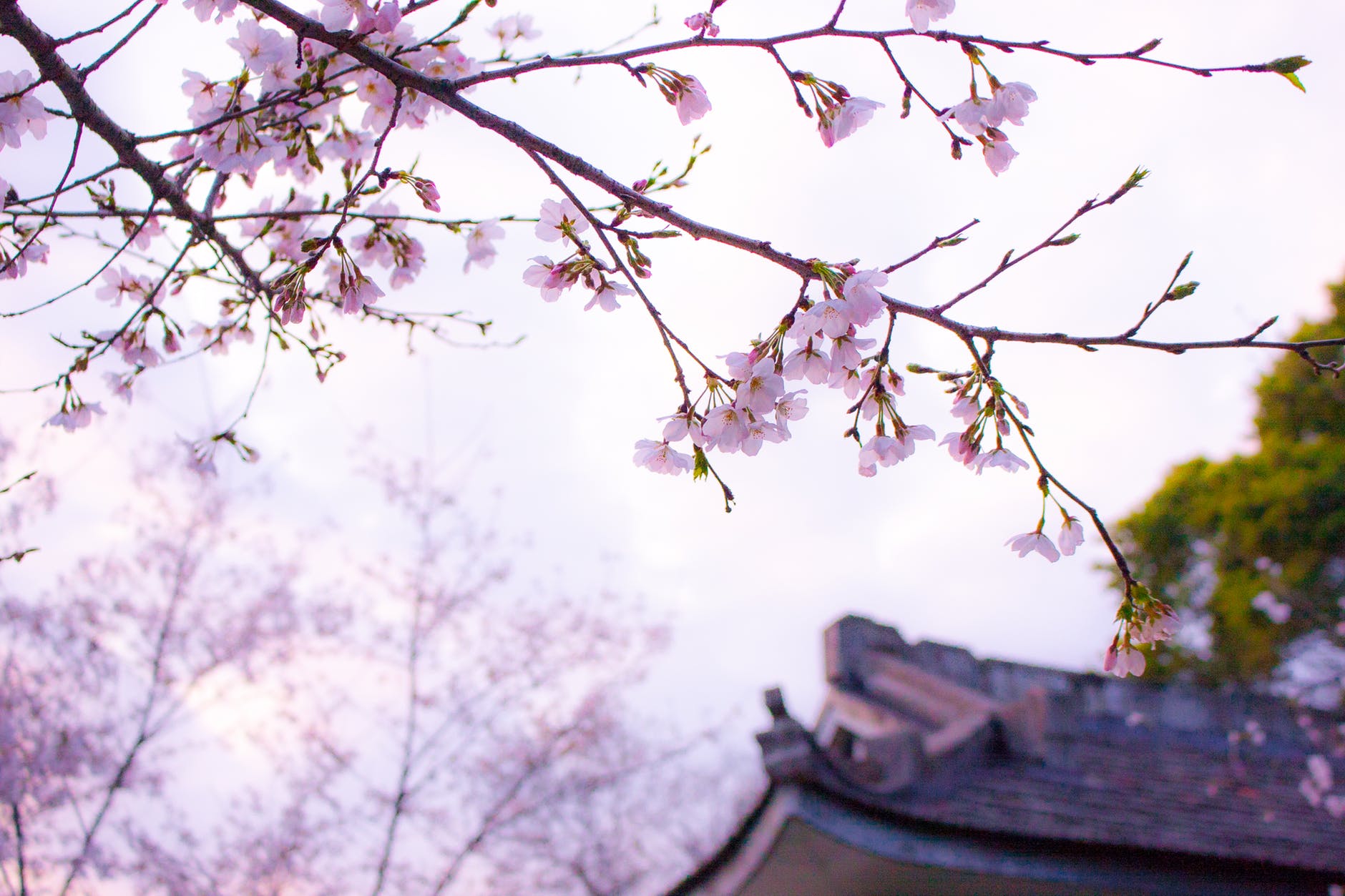
5. Stay in a hostel.
I stayed in excellent hostels that cost around £12-15 a night for a dorm bed in a female dorm. I met lots of lovely people and had a great time.
Are hostels in Japan safe? Nearly all hostels in Japan have female-only dorms. Many of the other guests were also Japanese. The dorms in Japan are more like pod/capsule hotels, so you have a compartment all to yourself, with a curtain, plug socket, reading light and locker. This also means that your roommates are much more respectful (I’ve noticed this in ALL pod-style dorms around the world, even mixed-gender ones). So yes, I felt very safe. The showers were also amazing, with well-designed cubicles, baskets for your things, and rows of vanity mirrors and dressing tables, like in the onsen. A truly next-level hostel experience.
(Get £15 off your booking if you use my booking.com link. No strings.)
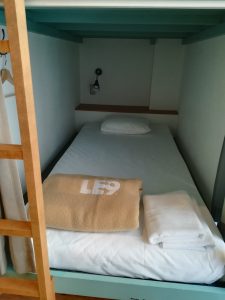
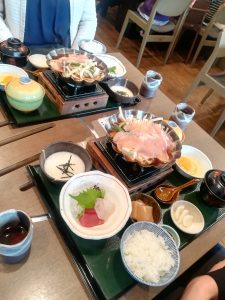
6. Take part in a matcha tea ceremony.
Tea is part of a sacred ritual in Japan, and I highly recommend you seeking out a ceremony so you can experience this special craft first-hand. Matcha is a powdered green tea, and it’s whisked up slowly by a lady who performs the ceremony.
The tea is then served in small bowls with a little “sweet”. It’s a slow, careful process, and one that you really have to try. The Japanese usually kneel down on tatami mats for this, but us Westerners might find our hips and knees to be a little stiff for this posture, so it’s fine to sit cross-legged!
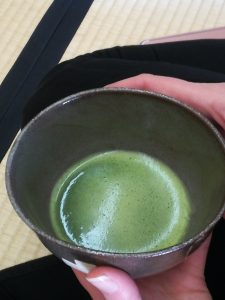
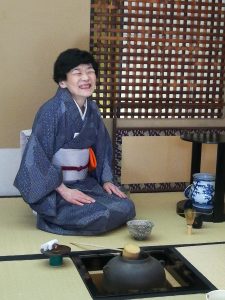
If you enjoyed this article, you might also like to read about five epic films about solo female travel, my story on outdoor adventuring in Slovenia, and about festivals in stunning locations.

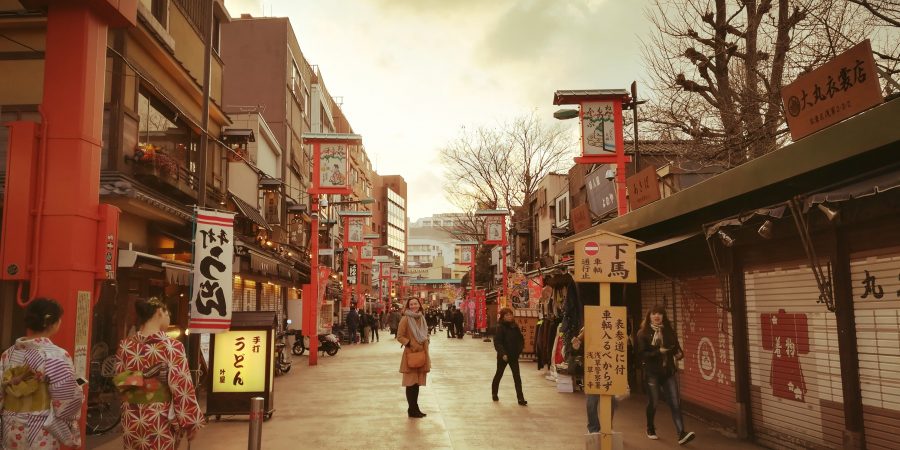
[…] If you enjoyed this post, you might also enjoy reading about my solo trip to Albania and my time backpacking around Japan. […]
So lovely to read your tips. I’ve been lucky enough to go to Japan – the experience is amazing!
It’s amazing, isn’t it?! Thanks for taking the time to comment.